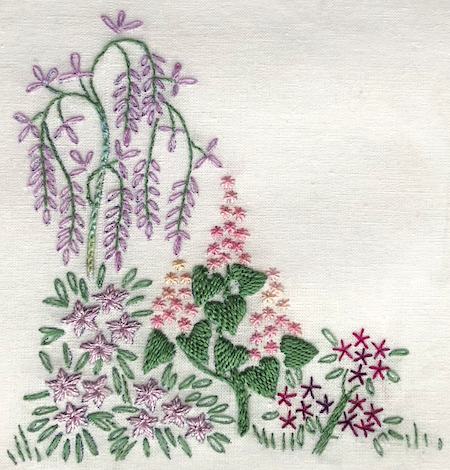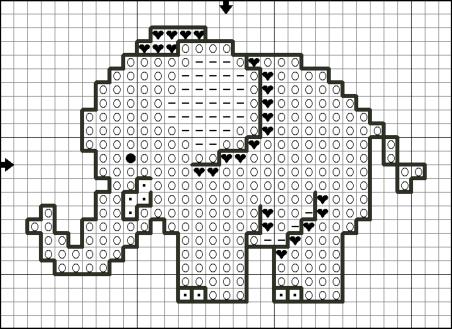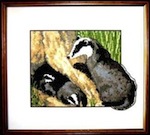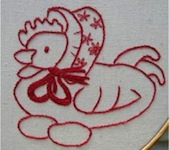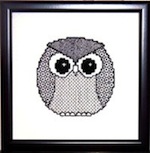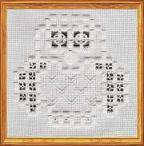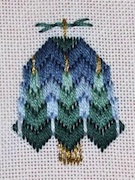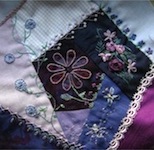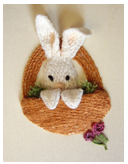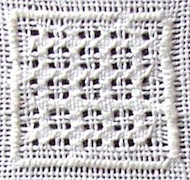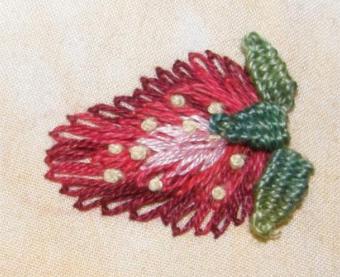Yes, You Can Embroider!
Tutorials, patterns and tips to build your stitching skills
Imagine sitting with a hoop in your lap, soft thread between your fingers, and just ten minutes to yourself.
You could stitch a tiny flower or a simple initial.
It’s a lovely way to slow down and create something special.
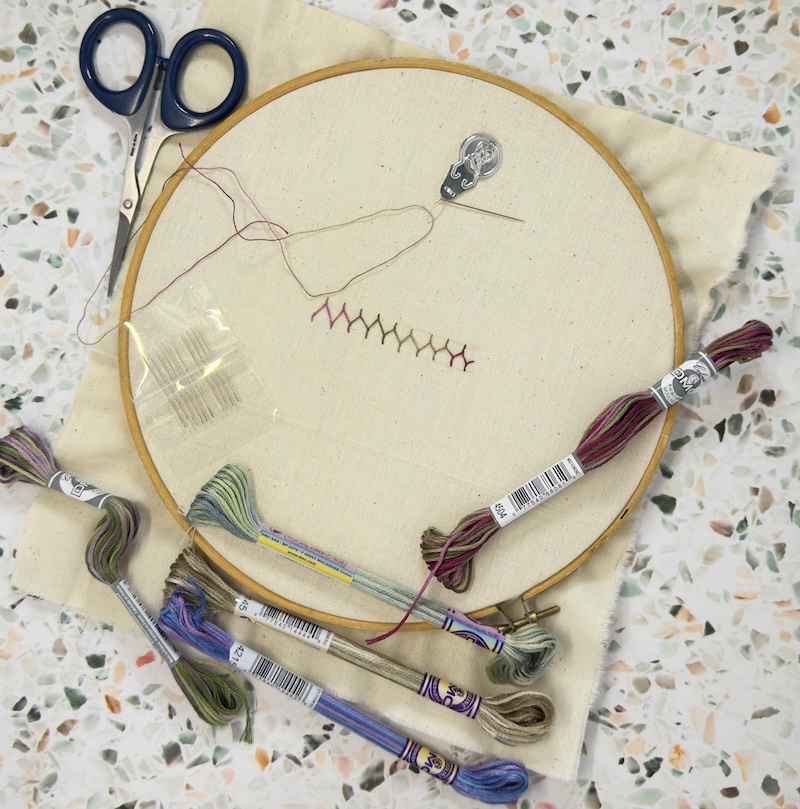
What You'll Learn First
- Cross stitch: Tiny Xs, perfect for motifs and detailed pictures.
- Running stitch: Simple straight stitches for outlines and quick texture.
- Stem stitch: Twisted rope effect, ideal for stems and flowing lettering.
Embroidery Starter Kit: What to Buy First
- 1. Embroidery floss: Look for 6-strand stranded cotton; it's easy to separate and perfect for most beginner projects.
- 2. Hoop: A 6--7 inch wooden hoop keeps your fabric taut and is just the right size for starting out.
- 3. Needles: Embroidery needles, size 5-7, work well with standard floss and are easy to thread.
- 4. Fabric: Start with plain cotton or linen; it's sturdy and easy to stitch.
- 5. Scissors: Small, sharp embroidery scissors make clean cuts and fit comfortably in your hand.
- 6. Marking pen: A water-erasable pen lets you draw your design and wash it away when you're done.
- 7. Practice scrap: Any spare fabric will do; use it to test stitches before starting your project.
Start with just a few basics: embroidery floss, a needle, a small hoop, any scrap of cotton fabric, and scissors. You can begin stitching today, you don't need anything fancy.
Your First Stitches
Cross Stitch: - Tiny Xs that make pictures on fabric that has the same number of threads in each direction.
Step-by-Step
- Bring the needle up at the bottom-left of one Aida square.
- Push it down at the top-right to make the first diagonal.
- Bring the needle up at the bottom-right, then down at the top-left to finish the X.
- Keep the thread snug with a little give; stitch each X the same way across the row.
Pro Tip: Finish each full X or do all first diagonals across, then complete the second diagonals—pick what feels easiest.
Practice: Stitch a row of five Xs and check the back for neatness.
Running stitch: Little dashes in a line, like drawing with your needle. Try stitching a short row of about 10 stitches keeping the gaps the same length as your dashes.
Step-by-Step
- Start stitching: Bring your needle up where you want the line to begin, then back down a short distance away, about the width of a grain of rice.
- Repeat: Keep making straight stitches in a line, spacing each one evenly. Try to match the length of your stitches and the gaps between them.
- Secure the ends: When you finish, make a tiny stitch over the last one to lock it in place.
- When to use it: Perfect for quick outlines, simple lettering, or adding a dashed texture to your project.
Tip: Play with stitch length - short stitches look tidy, while long ones give a sketchy, hand-drawn effect.
Stem stitch: Creates a raised, rope-like line that’s perfect for stems, outlines and lettering.
Step-by-Step
- Start your first stitch: Bring your needle up at your starting point.
- Make the next stitch: Insert the needle a short distance ahead, then bring it up halfway back from your last stitch. Keep the thread below your needle as you pull.
- Find your rhythm: "Up ahead, down, up halfway"--repeat this as you stitch.
- Shape your line: Shorten stitches on tight curves for a smooth look.
Where is the design?
When you’re ready to begin, you’ve got two simple options: trace a pre-printed pattern for a quick, relaxed start, or work from a grid for precise, detailed stitching.
No drawing skill needed, just pick what feels easiest for you.
Pre-Printed Outlines
Pre-printed patterns are a great way to get started.
You can stitch over the lines or fill the spaces, using the suggested stitches as a guide — or experiment with your favorites.
No drawing skills required. Trace the pattern onto your fabric, then stitch.
Counted Thread Charts
Counted thread (graphed) charts help you create even, accurate stitches by counting fabric threads and following a key.
If counting feels tricky, try the free cross-stitch calculator to pick the right fabric size for your project.
Beginner friendly techniques
Cross stitch
Cross stitch needs no drawing—just match symbols to colors and watch your design appear, stitch by stitch.
Ready to begin? Browse downloadable patterns and start stitching today.
Redwork embroidery
Redwork uses a single color for simple, striking designs—perfect for beginners.
Its simplicity helps you focus on basic stitches, without worrying about color choices or complex patterns.
Redwork is an approachable way to learn stitching and build your skills. Start with the little red hen pictured here—available free.
Counted thread techniques
Blackwork
Black thread on a light background creates striking geometric patterns. It may look complex at first, but I'll break each technique down step by step.
You'll learn to craft fill patterns, stitch intricate outlines, and experiment with shading and texture. Plus, you can download unique patterns to spark your next project.
I'm here to support you throughout your embroidery journey—let's explore Blackwork together.
Hardanger
Discover the beauty of Hardanger embroidery!
This technique uses satin stitches, cutwork, and needle weaving to create intricate designs. The result is a stunning piece that shows your creativity and skill.
Ready to try it? Check out the free Hardanger course to get started.
I offer downloadable Hardanger patterns for your next project.
Needlepoint
Looking for a craft that's both durable and beautiful? Needlepoint offers the best of both worlds.
Choose a painted canvas or try textured threads—the choice is yours.
Our Textures To Dye For collection offers downloadable charts to spark your creativity. Immerse yourself in the joy of needlepoint today.
Surface Embroidery
Crazy quilting
Enjoy the freedom of crazy quilting, where perfection isn't the goal, and quirks are celebrated. Let go of rigidity and release your creativity.
The true magic of crazy quilting lies in its variety. Each seam and patch tells a story, reflecting your unique personality and style.
These creations are genuine works of art. So jump in, be unconventional, and craft something beautifully original!
Start by building your basic block ready to decorate it.
Slow stitching
Seeking a calming embroidery experience? Try slow stitching. It invites you to savour each moment and to focus on the joy of making rather than the final outcome.
There are no complex patterns or strict rules—let your imagination guide you. Gather your favourite fabric scraps, pick threads that inspire you, and stitch at your own pace
More Advanced Techniques
Stumpwork
Make your stitching stand proud. Learn stumpwork techniques — wire-raised petals, padded bodies, and classic stitches — to create flowers, insects and small figures with real dimension.
Try the seasonal project: Easter bunny in a basket (step-by-step pattern included).
Whitework
Love clean, elegant texture?
Whitework explores pulled threads, subtlest filling stitches, and crisp geometry on white fabric.
It’s perfect for samplers, heirloom pieces, and calming practice sessions.
Download my free sampler packed with pulled-work and drawn thread exercises: a mini project to try tonight.
Closing note
There’s something quietly magical about stitching a design into being — the hush as thread slips through linen, the moment a French knot catches the light, and how a finished piece ends up feeling like a little mirror of you.
This space is my cozy corner for fellow makers: a place to trade tips, share triumphs, and get gentle help when a tangle or wonky stitch shows up.
I’ll post tutorials, quick troubleshooting tips, and tiny project ideas — and I’d love to see yours. Snap a photo of your latest hoop or tell me the stitch you want to conquer next; your notes shape what I make here.
Keep in touch via Stitchin'Time
Stay in the loop! Sign up for Stitchin'Time to get the scoop on my latest tutorials and articles.
As a subscriber, you'll be the first to know about new pages, products, and updates. Plus, you'll score exclusive bonuses - think behind-the-scenes access to my ideas and a chance to share what you love (or what I might have missed).
The best part? It's completely free and your info is safe with me.
So what are you waiting for? Join my community today and never miss a thing!
